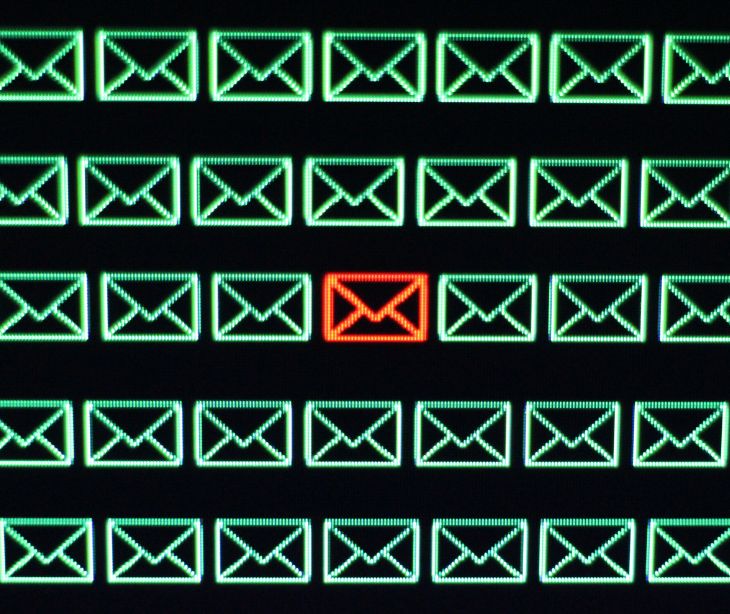
Open relay exploits occur when attackers use improperly configured email servers to send unauthorized spam or malicious emails, disguising their true origin.
Understanding open relay exploits
Open relay exploits occur when an email server is configured to allow anyone on the internet to send emails through it. The server will forward emails from any sender to any recipient, effectively acting as a relay. Spammers and malicious actors use this vulnerability to send large volumes of spam or malicious emails, disguising their origin and bypassing email security measures. This damages the reputation of the compromised server and contributes to the broader problem of email spam and cyberattacks.
How it works
- An email server is configured to allow relaying from any sender to any recipient.
- Spammers and attackers search for these vulnerable servers on the internet.
- Once found, they use the open relay server to send large volumes of emails.
- These emails can include spam, phishing attempts, or malware.
- The open relay server forwards these emails, masking the true origin of the sender.
- This allows the attackers to bypass security measures that block known spam sources.
- The compromised server's reputation suffers, often getting blacklisted by other email services.
- This can lead to legitimate emails from the server being marked as spam.
- Organizations must secure their email servers to prevent these exploits.
How to identify vulnerable servers
A 2020 Springer Nature Collection study provided the following general definition for vulnerable servers, “System vulnerabilities are weaknesses in the software or hardware on a server or a client that can be exploited by a determined intruder to gain access to or shut down a network.” Simply put, vulnerable servers are email servers that are set up incorrectly, allowing anyone on the internet to send emails through them. Attackers exploit these servers to send spam, phishing emails, or malware without revealing their true identities.
The server acts as a middleman, forwarding the emails and hiding where they really come from. This helps attackers get past security filters and spread their malicious content. Ensuring that email servers are correctly secured and do not work as open relays helps in preventing these exploits and protecting email communication.
How to identify vulnerable servers:
- Test the server with known email relay testing tools.
- Check the server’s configuration settings for relay permissions.
- Look for signs of unusual outbound email traffic.
- Use online services that scan for open relay vulnerabilities.
- Monitor for blacklisting reports or alerts from email service providers.
See also: How to manage persistent threats and zero day vulnerabilities
Strategies to prevent open relay exploits
- Zero trust architecture: Adopt a zero trust security model where every access request to the email server is authenticated and authorized, regardless of the user’s location within or outside the network.
- Micro-segmentation: Use micro-segmentation to create secure zones in your network, ensuring that even if one segment is compromised, the attacker cannot move laterally to access other systems.
- AI and machine learning: Deploy advanced threat protection tools that use AI and machine learning to detect and mitigate suspicious email activity in real-time.
- Behavioral analysis: Use behavioral analysis to identify unusual email patterns that may indicate an open relay exploit or other malicious activities.
- Email honeypots: Deploy email honeypots as decoys to attract and identify attackers attempting to exploit open relays. This can help you detect and analyze attack patterns without compromising real email servers.
- Threat intelligence feeds: Subscribe to real-time threat intelligence feeds that provide updates on emerging email threats and vulnerabilities specific to the healthcare industry.
- Collaboration with industry groups: Collaborate with healthcare cybersecurity groups and forums to share insights and strategies for preventing open relay exploits.
- Encrypted email archiving: Use encrypted email archiving solutions that store emails securely and provide tamper-evident logging to track any unauthorized access attempts.
See also: HIPAA Compliant Email: The Definitive Guide
FAQs
How can someone know if their email server is an open relay?
They can use open relay testing tools or services to check if their email server allows unauthorized relaying.
How does an open relay differ from a closed relay?
An open relay allows any sender to use the server to forward emails, while a closed relay restricts this capability to authenticated or trusted users only.
What is DMARC?
Domain-based Message Authentication, Reporting & Conformance (DMARC) is an email authentication protocol that helps protect against email spoofing by instructing receiving servers on how to handle emails that fail SPF or DKIM checks.
Subscribe to Paubox Weekly
Every Friday we'll bring you the most important news from Paubox. Our aim is to make you smarter, faster.




